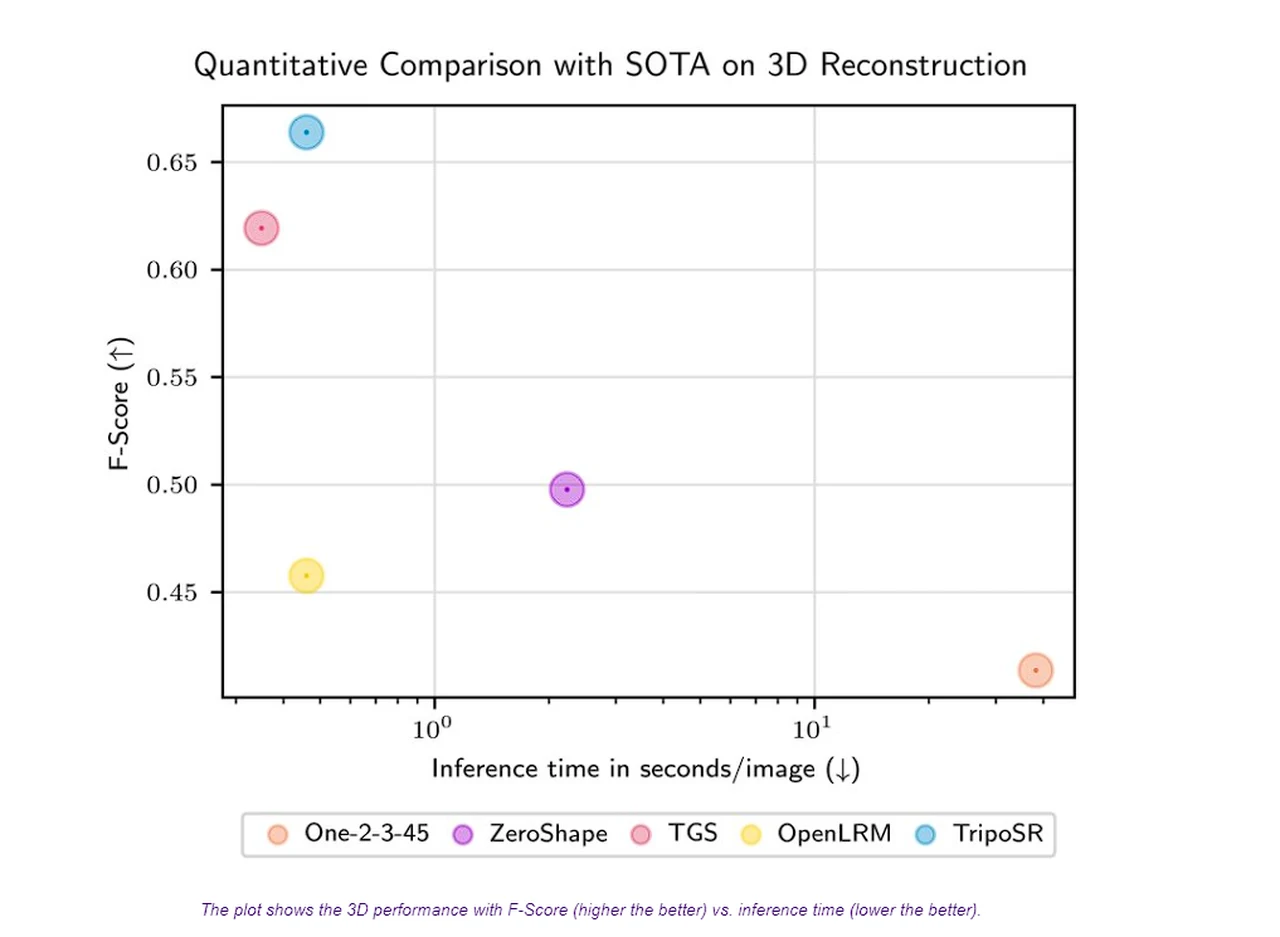Stability AI, in partnership with Tripo AI, has introduced TripoSR, a tool designed to convert images into high-quality 3D models rapidly. TripoSR is inspired by the Large Reconstruction Model For Single Image to 3D and aims to meet the needs of various industries, including entertainment, gaming, industrial design, and architecture. Despite the excitement surrounding TripoSR, Stability AI has faced some ethical concerns regarding its data collection methods, which included scraping training data from Midjourney. Which led to the banning of Stability’s staff from Midjourney’s services.
- Partnership Release: Developed in partnership with Tripo AI, introducing TripoSR for generating high-quality 3D models from a single image in under a second.
- Low Inference Budgets: Operates effectively under low computational resources, including environments without a GPU, making it accessible to a broad user base.
- Open Source Availability: The model weights and source code are released under the MIT license, supporting commercial, personal, and research applications.
- Inspiration and Application: Inspired by LRM (Large Reconstruction Model For Single Image to 3D), TripoSR is designed for use in entertainment, gaming, industrial design, and architecture, providing rapid 3D object visualization.
- Performance: Outperforms other models like OpenLRM, delivering draft-quality 3D textured meshes in approximately 0.5 seconds on an Nvidia A100 GPU.
- Accessibility: Fully accessible to users without the need for GPU resources.
- Technical Innovations: Includes training data preparation from a curated CC-BY subset of the Objaverse dataset, channel number optimization, mask supervision, and efficient crop rendering strategies to improve model generalization and performance.
Soon it will be possible to transform a simple photograph into a detailed 3D model with just a few clicks. This is no longer a distant dream, thanks to the collaborative efforts of Stability AI and Tripo AI, who have unveiled TripoSR, a new tool that’s reshaping the way we think about 3D modeling. This innovative technology is poised to make a significant impact on industries like entertainment, gaming, and architecture by simplifying the process of creating 3D models and making it more cost-effective.

TripoSR is built on the Large Reconstruction Model For Single Image to 3D (LRM) framework, which is known for its technical prowess and wide-ranging uses. What sets TripoSR apart is its ability to run efficiently on less powerful computers, which means you don’t need expensive graphics processing units (GPUs) to use it. This is great news for small businesses and independent creators who previously might have found the cost of generating 3D models prohibitive. The code for the TripoSR model is now available on Tripo AI’s GitHub, and the model weights are available on Hugging Face.
One of the most exciting aspects of TripoSR is that it’s released under the MIT license. This means that anyone can use it for commercial projects, personal endeavors, or research purposes without worrying about licensing fees. This level of access could spark a wave of creativity and lead to significant improvements in the quality of 3D modeling across different sectors.
TripoSR creates 3D models from images
Some other articles you may find of interest on the subject of generating 3D models using artificial intelligence :
TripoSR has undergone several enhancements compared to the original LRM model. These improvements include channel optimizations and the addition of mask supervision, which together enhance the detail and accuracy of the 3D models it produces. The end result is a tool that not only operates quickly but also delivers models that are more refined than those created by similar technologies, such as OpenLRM.
Realistic AI generated 3D models
To ensure that the 3D models are as realistic as possible, TripoSR is trained using a diverse range of rendering techniques. This approach improves the tool’s ability to interpret and recreate real-world images, resulting in models that are both lifelike and intricate. For those interested in exploring TripoSR further or contributing to its development, the model weights and source code are openly available on platforms like GitHub and Hugging Face. There’s also a detailed technical report that provides in-depth information about how the tool works.
Looking ahead, the integration of image-to-3D technology into the upcoming Stable Diffusion 3 model is anticipated to enhance the creation of realistic videos and immersive experiences. This advancement could redefine visual media by offering creators new ways to bring their ideas to life with unprecedented detail and depth.
TripoSR represents a significant step forward in image-to-3D technology. Its affordability, open licensing, and technical improvements are set to empower creators and industries around the world. Despite facing some ethical hurdles, the emphasis on its capabilities and future applications is unwavering, signaling the dawn of an era where authentic and accessible 3D models become the norm. For more information on the new TripoSR model jump over to the official Stability AI technical report.
Filed Under: Technology News, Top News
Latest TechMehow Deals
Disclosure: Some of our articles include affiliate links. If you buy something through one of these links, TechMehow may earn an affiliate commission. Learn about our Disclosure Policy.
